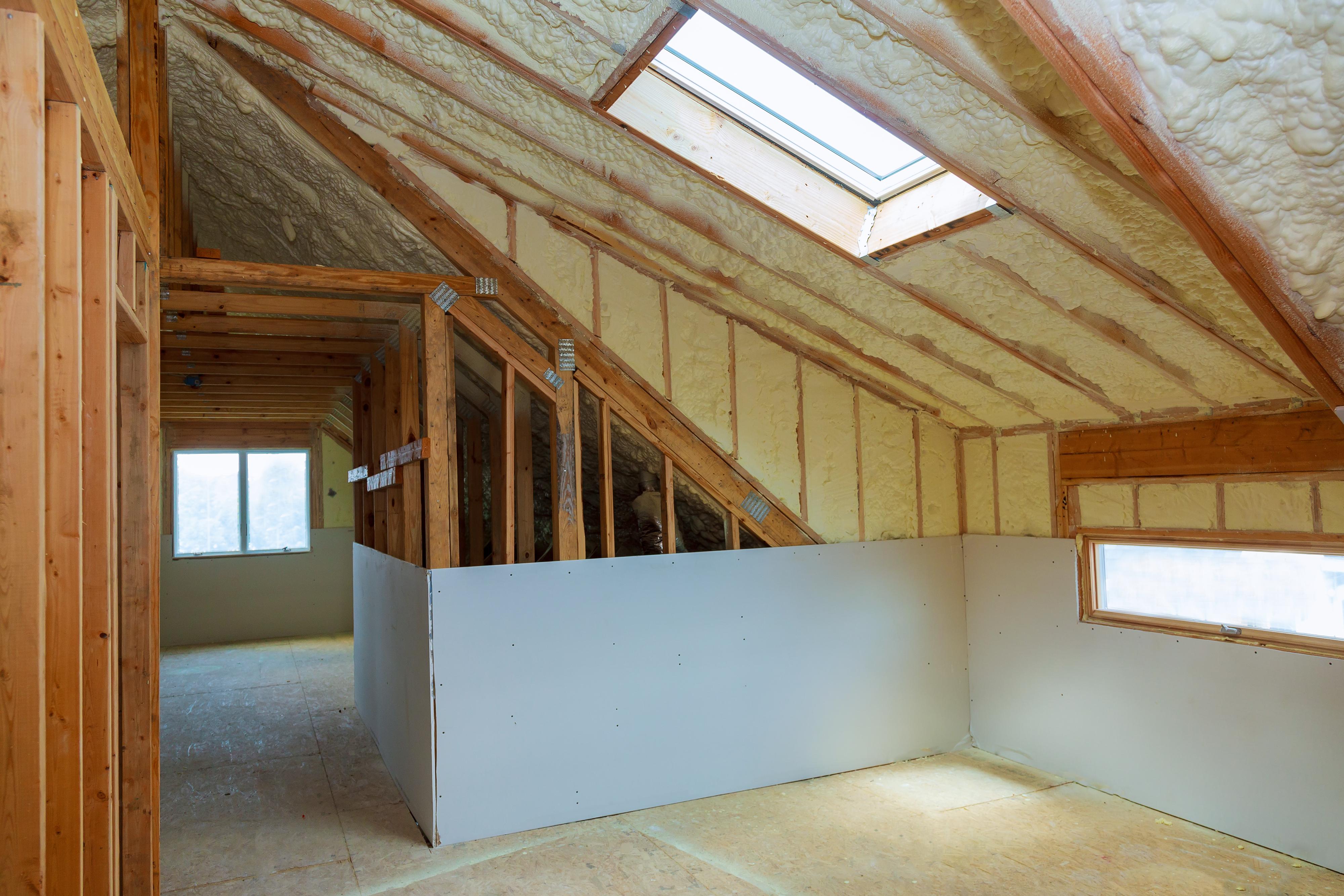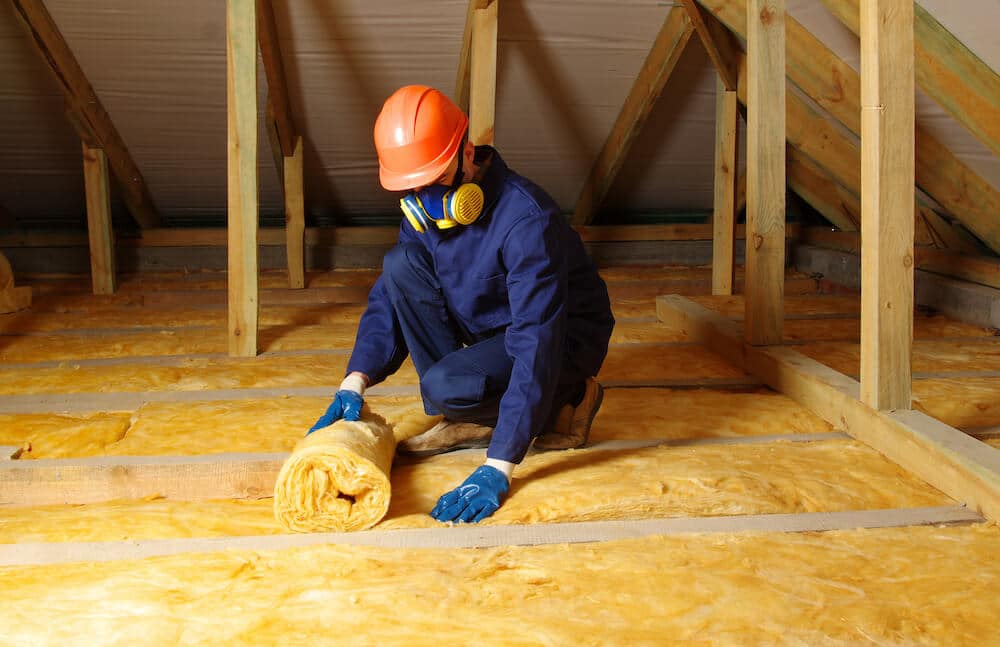Why Attic Insulation DFW is Essential for Energy Effectiveness in Dallas-Fort Worth
Why Attic Insulation DFW is Essential for Energy Effectiveness in Dallas-Fort Worth
Blog Article
Discover the Different Kinds Of Attic Insulation and Their Special Advantages for Your Home's Power Efficiency

Fiberglass Insulation
Fiberglass insulation is among the most commonly used materials for attic insulation as a result of its outstanding thermal performance and cost-effectiveness. Composed of little glass fibers, this material efficiently traps air, producing an insulating obstacle that aids preserve constant interior temperature levels. Its high R-value per inch makes it specifically efficient at withstanding warm transfer, which is essential for power preservation in homes.
Setup of fiberglass insulation is fairly uncomplicated, typically offered in batts or loose-fill types, fitting different attic configurations. Additionally, it is non-combustible and immune to dampness, lowering the risk of mold and mildew development. This resilience adds to its durability, making fiberglass a feasible lasting investment for house owners.
Furthermore, fiberglass insulation is typically made from recycled products, which improves its eco-friendliness. The material can also contribute to soundproofing, lessening noise transfer between rooms. While it is necessary to use protective equipment during installment to prevent irritability from the fibers, the overall benefits of fiberglass insulation, consisting of power financial savings and environmental considerations, make it a popular choice for boosting attic efficiency and promoting a comfy living atmosphere.
Spray Foam Insulation
Spray foam insulation is a highly reliable alternative for attic room insulation, recognized for its remarkable air securing and thermal efficiency. This cutting-edge insulation product is composed of a mix of isocyanate and polyol material, which, when integrated, increases swiftly to fill up spaces and tooth cavities in the attic area. Its ability to abide by numerous surface areas ensures a constant obstacle versus air leakages, significantly reducing warmth loss throughout colder months and warmth gain throughout warmer periods.
One of the essential advantages of spray foam insulation is its high R-value per inch, which indicates it gives outstanding thermal resistance in a reasonably slim application. This is especially helpful in attic rooms where room is frequently restricted. Furthermore, spray foam can help reduce wetness buildup, decreasing the danger of mold and mildew and mold growth, which can be destructive to both the framework and indoor air top quality.
While the first expense of spray foam insulation might be more than standard alternatives, its lasting power financial savings, paired with raised convenience and enhanced home value, make it a worthwhile financial investment for property owners seeking improved energy effectiveness. Attic Insulation DFW. Generally, spray foam insulation stands apart as a reliable option for maximizing attic room insulation
Cellulose Insulation

Cellulose insulation is a preferred choice for attic insulation, largely composed of recycled paper products treated with fire resistants. This eco-friendly choice is recognized for its excellent thermal performance, effectively minimizing warm transfer in both summertime and winter season months. The thick structure of cellulose permits it to load spaces and voids in attic room spaces, offering a smooth barrier versus air leaks.
One of the significant advantages of cellulose insulation is its capability to resist mold and mildew and insects, owing to the fire retardant therapies used throughout production. In addition, it boasts a high R-value per inch, which equates right into premium power performance. Property owners can expect lower heating and air conditioning costs as a result of improved insulation.
Installment is usually accomplished through blowing loose cellulose right into the preferred location, permitting a effective and quick procedure. This technique also minimizes disturbance to the existing structure. Cellulose insulation has a reasonably reduced ecological influence, as its production procedure makes use of recycled products, adding to sustainable structure methods.
Rock Woollen Insulation
Amongst the different choices for attic room insulation, rock wool, additionally recognized as mineral woollen, sticks out due to its impressive thermal and acoustic performance. Made from recycled or natural materials, rock woollen is produced by melting rock and spinning it right into fibers, resulting in a product that offers excellent insulation properties.
Among the significant advantages of rock wool insulation is its high R-value, which suggests its effectiveness in withstanding heat circulation. This characteristic not just enhances power performance but also adds to keeping a comfy indoor temperature year-round. Furthermore, rock woollen is naturally fireproof, making it a safer option for homes as it can endure high temperatures without melting or releasing poisonous fumes.
Moreover, rock wool insulation stands out in soundproofing capacities, efficiently reducing sound transmission in between areas and from outside sources. This makes it a suitable choice for property owners seeking a serene living environment. Additionally, rock woollen is moisture-resistant, assisting to avoid mold development and preserving the architectural honesty of the attic room. Overall, rock article woollen insulation gives a thorough remedy have a peek at these guys for enhancing power effectiveness, safety, and convenience in household setups.
Radiant Barrier Insulation
Glowing barrier insulation offers as an effective solution for reducing warm transfer in attics, especially in warmer environments. This type of insulation works by mirroring induction heat away from living spaces, consequently reducing the amount of warmth that gets in a home during warm weather condition - Attic Insulation DFW. Usually made up of an extremely reflective product, such as aluminum foil, glowing obstacles are mounted in attics, facing the roof covering, where they can obstruct incoming heat from the sun
The main advantage of radiant obstacle insulation is its capability to reduced air conditioning expenses. By reflecting warmth instead of absorbing it, radiant barriers can aid maintain a much more steady interior temperature, minimizing the workload on cooling systems. This performance equates right into reduced energy costs and increased convenience for homeowners.
In enhancement to energy cost savings, glowing barriers can also add to boosted interior air quality. By lowering heat build-up, they assist reduce moisture degrees, which can prevent mold development and boost total air circulation. When installed correctly, radiant obstacle insulation can be an indispensable enhancement to any energy-efficient home, making it a worthwhile consideration for property owners wanting to improve their attic insulation strategy.
Verdict
To conclude, understanding the different kinds of attic insulation-- fiberglass, spray foam, cellulose, rock woollen, and radiant barriers-- makes it possible for house owners to make educated choices relating to power efficiency. Each insulation kind presents unique advantages, such as exceptional thermal resistance, moisture administration, and audio attenuation. By choosing the appropriate insulation product, substantial decreases in power costs can be achieved, together with enhancements in interior convenience. Eventually, the best choice adds to a more lasting living environment and promotes total energy conservation.

In conclusion, comprehending the different types of attic insulation-- fiberglass, spray foam, cellulose, rock wool, and glowing obstacles-- allows homeowners to make educated choices concerning energy performance.
Report this page